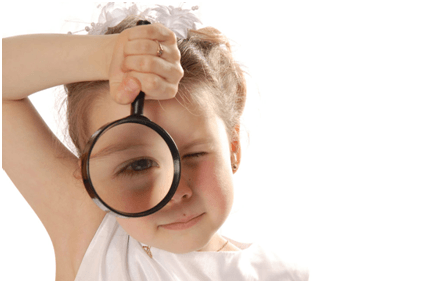
A study presented by VIP-HIP (Vision In Pre-schoolers – Hyperopia In Pre-schoolers) group at the Association for Research in Vision and Ophthalmology Meeting in Florida (USA) proved that hyperopic children aged between 4 and 5 years old show lower performance in terms of preschool literacy.
The cross-sectional study examined 492 children attending preschool or kindergarten who had not previously worn refractive correction. From a total number of 492 children, 244 were hyperopic and 248 emmetropic (with an ideal vision state).
In order to detect hyperopia cases (between 3 and 6 dioptres in most hyperopic meridian in, at least, one eye; astigmatism equalling or lower than 1,5 dioptres; and anisometropia, or difference of refraction error between one eye and the other, equalling or lower than 1 dioptre) and distinguish them from cases of ideal ocular state (hyperopia, astigmatism, anisometropia and myopia lower than 1 dioptre), cycloplegic refraction, a method analysing all these variables, was used. Threshold visual acuity tests and cover tests were used to rule out amblyopia (lazy eye) or strabismus. The accommodative response, near binocular visual acuity and near steroacuity were also measured.
Examiners tested children literacy by means of the Test of Preschool Early Literacy (TOPEL), composed of Print Knowledge, Definitional Vocabulary, and Phonological Awareness subtests.
The results from the tests, which were carried out in 492 children of a mean age of 58 months (almost 5 years) indicated, once the adjustments for age, race and ethnicity, and parent/caregiver’s education were done, that the total difference in the performed tests between hyperopic and emmetropic children was 4.3 points. The area in which differences were bigger was Print Knowledge.
Higher deficits were detected in children with hyperopia higher than 4 dioptres (-6.8 points in global results and -4 points more specifically in Print Knowledge). However, the highest deficits were shown by hyperopic children with near binocular visual acuity of 20/40 or lower (-8.5 in global test results and -4.5 points in Print Knowledge) or with reduced near steroacuity of 240 seconds of arc or lower (-8.5 points lower in global score and -5.4 points lower in Print Knowledge score compared to emmetropic children).
Therefore, hyperopia higher than 4 dioptres or hyperopia between 3 and 6 dioptres together with reduced near binocular visual acuity (20/40 or lower) or near steroacuity (240 seconds of arc or lower) results in a lower performance in preschool literacy tests in children between 4 and 5 years old.

Contact us or request an appointment with our medical team.